Whether you are running a B2B or B2C business, the key to any marketing strategy is how you present your brand. A media kit is a collection of materials that shows a preview of your brand and outlines its best qualities. This packet of information is sort of an elaborate business card that helps you create collaborations with other brands, media, or influencers. It contains crucial information about the brand identity, your product and service, target audience, and your best results. A startup media kit can be delivered in different formats – a .pdf or a .doc file, a zip file with multiple documents, a Google Drive folder or document, or even a simple web page. It is a mix of text (describing who you are and what you do) and visuals (better describing the brand). Sharing a universal media kit helps you pitch collaboration proposals, reaching out to influencers, and much more. This post will cover the questions of
- why SaaS businesses need a media kit,
- what should media kits include, and
- how you can create one.
Why Do You Even Need a Media Kit
An important part of running a SaaS company is outreach – building partnerships, acquiring new clients, implementing inbound marketing strategies, reaching out to influencers. You often spend time presenting your brand to a potential partner, making announcements in the media, pitching to potential investors.
Every time you reach out to a new company/person, you are starting a new conversation. And, at the beginning of every new conversation, you start with an introduction. A media kit is an excellent way to open a dialogue and introduce your brand. A startup media kit exists to make your life easier. You don’t have to prepare a new presentation for each pitch. Instead, you can simply attach your media kit to every new email, and optimize your outreach process by saving a lot of time. B2B media kits are prepared to present the perks of collaboration with your brand to another company that you wish to partner up with. Whether you wish for a product collaboration, integration, social media, or guest post, your media kit will have your back.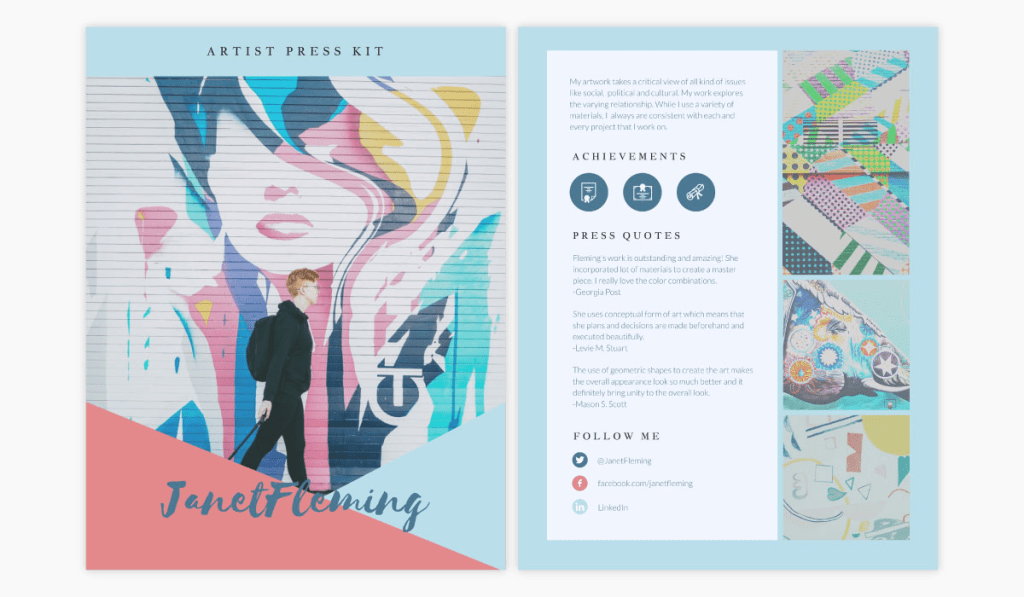
What Should Your Media Kit Be Made Of
You can be creative and make your media kit completely unique. However, there are some essential elements your kit should have. Before you start working on it, make sure to gather all the information you need.
Contact Info
First thing’s first – you need to make it easy for your potential partners to get in touch with you. Include the information about the relevant contact person someone should contact to discuss collaboration opportunities. If you have different media kits for partners, influencers, media, update contact information to always point at the person in charge for that communication. Example: HELLOSIGN team is sharing their media kit as a web page, but also as a downloadable bundle for the press to read. The bundle is in a ZIP format and contains the photos of the leadership team, logos, and product shots. The information they share in the first block of the webpage is who you can get in touch with for further information. https://www.hellosign.com/press
Example: HELLOSIGN team is sharing their media kit as a web page, but also as a downloadable bundle for the press to read. The bundle is in a ZIP format and contains the photos of the leadership team, logos, and product shots. The information they share in the first block of the webpage is who you can get in touch with for further information. https://www.hellosign.com/press
Company Mission Statement
The front page of your startup media kit should introduce your brand briefly. Highlight the vital information describing what you are all about. This is the part you will use to buy the interest of the reader, so shine bright. Further along, this area should include information such as who is the company’s founder and CEO, who makes the leadership team, and a brief peeks into the brand history. You can add the founder’s quote about your vision and add a personal touch to the whole thing.
Information on Your Product or Service
One of the reasons you are creating a media kit in the first place is to present what you actually make and provide. Share insight on your products along with the reviews you might have. When sending outreach emails to a potential business partner, it is a good practice to attach a booklet – sales kit alongside your startup media kit.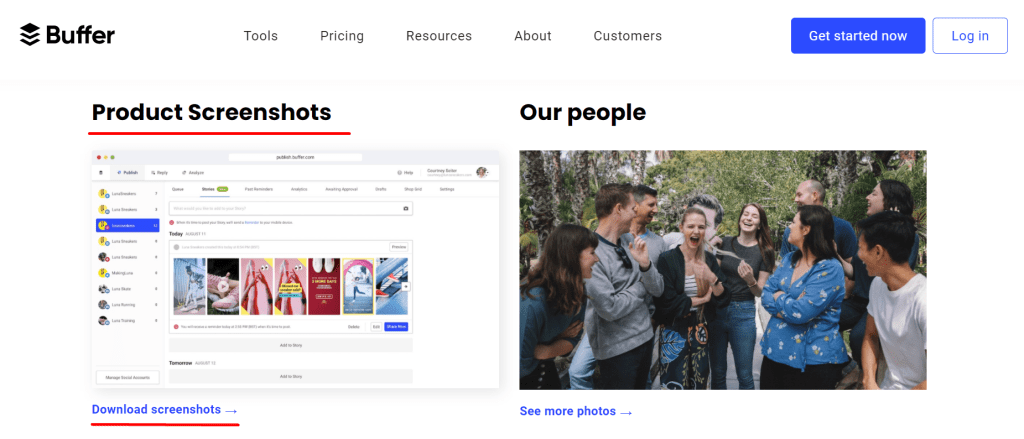 Example: Buffer offers digital products that are best shown-off as the screenshots of “behind the curtains”. This is why their on-site and off-site media kit includes an insight on the product highlights. buffer.com/press
Example: Buffer offers digital products that are best shown-off as the screenshots of “behind the curtains”. This is why their on-site and off-site media kit includes an insight on the product highlights. buffer.com/press
Who Is Your Audience
This segment is super important, especially when approaching business partners. In order to create a quality partnership, your target groups must overlap and align well. Include the most relevant information you have learned about the demographics of your audience in appealing charts and graphs. Include:
- Big numbers (how big is your audience),
- Specific target group(s),
- Different networks/social media where you are followed.

Recommendations
Nothing sells a brand better than a happy customer.
- If you are preparing a startup media kit for investors, focus on the success stories of your clients/users.
- If you are pitching new partnership opportunities, highlight the ongoing partnerships that you are truly proud of.
Charts And Graphs
Represent your data visually. Not only for your demographics segment but for everything else you think is relevant. Depending on who your pitch is directed at, you can include:
- Website stats (Domain Rank, User Rank, Visits stats),
- Campaign results (via email or social media),
- Revenue growth throughout the year,
- The scale of your business year after year.
Press Clipping And Recognitions
Don’t be shy when creating your media kit. Show off every valuable result worth bragging about. Include the rewards your brand might have and prestigious press coverage.
This segment testifies your brand is not a joke – but a legit company worth working with. Here is the moment you can make sure you get only positive responses.
 Example: Workday has a section of their online media kit to feature their coverage. They are always up-to-date and this helps to indicate their relevance. https://www.workday.com/en-us/company/latest/newsroom.html
Example: Workday has a section of their online media kit to feature their coverage. They are always up-to-date and this helps to indicate their relevance. https://www.workday.com/en-us/company/latest/newsroom.html
FAQ
Your media kit contains crucial information about your business, which is why the FAQ segment is not essential when you are making your very first startup media kit. Once you start implementing your outreach strategy with the media kit attached, other significant details and metrics that are missing might come to light. If you keep experiencing the same questions after your pitch, it is worth putting together a prepared set of answers to make your dialogues easier and faster.
Powerful Visual Elements
When it comes to the media kit, the same rules apply when you are making a sales brochure, job resume, or any other document that should grab someone’s attention. Don’t be boring. Visual elements can not only help illustrate the important features of your brand but also make it appear more friendly and fun to work with. Choose visuals for a startup media kit as carefully as you would for your Instagram page. Let your design team dedicate enough time to choosing the high-resolution graphics, images, and logos. This will be the first thing that will buy the interest of your potential partners or investors.
How to make a startup media kit step by step
Now that you’ve gathered all the relevant information, it’s time to put together a knockout media kit that will blow your partners away. Let’s get started.
Step #1 Categorise The Information You Are Sharing
Your company has a lot to tell and many success stories to share. Now is the time to select only the ones relevant to the receiver. Different types of data will interest different receivers. Sort out your stats accordingly into three categories, depending on whether you are reaching:
- A potential partner company with a B2B proposal,
- An investor to support you in your next phase of development, or
- An influencer that might be interested in promoting your brand.
Step #2 Choose A Professional Template
There are different software for creating startup media kits that can make this process easier for you, such as Visme, Canva, Designhill. Most of them have prepared templates, so you wouldn’t have to begin from scratch, plus you are guaranteed to end up with an exceptional layout. Choose the template that resonates with your company the most and start customizing.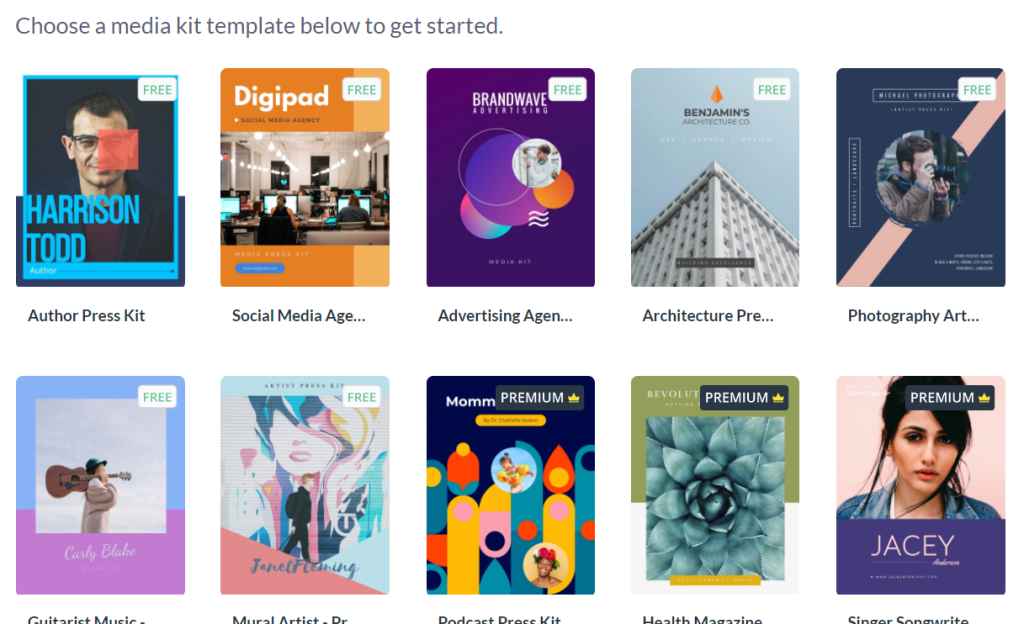 Example: Free and premium media kits from Visme. https://www.visme.co/templates/media-press-kit/
Example: Free and premium media kits from Visme. https://www.visme.co/templates/media-press-kit/
Step #3 Integrate Your Brand Style
Your media kit has to be consistent with your brand identity, and this includes:
- The voice of your copy.
- The colors and visual representation.
- The fonts you are using.
- Logo style applied according to the Graphic Book of Standards.
Step #4 Carefully Select The Visuals
As mentioned before, visual elements are the key to making a good first impression. If your startup media kit document is too small to include all your images, presentations, and graphics – you can always send out a .zip file bouquet of strong visuals. Here is a checklist of what you could and should include in your media kit.
1.Logos In High Resolution
It sounds like common sense, and perhaps you are wondering why this is stressed so much. Having the best versions of your logo included is extremely important and often taken for granted by the marketing teams.Example: Patreon shares the brand logo and assets with their media kit, indicating the right ways of using the logo, fonts, and more. https://www.patreon.com/brand
2.Charts And Infographics
Readers of your media kit will be individuals from another company’s marketing or outreach team. Every single time you have any kind of data or statistic to share, visualize it. These guys are often swamped by dry text and numbers, but the illustrative chart can help you achieve your goals – impress them, and get them to read the whole document. Infographics are the most popular way to represent your brand’s journey. They are attractive to every type of audience, so take full advantage of them.
3.Compelling Photographs
Try avoiding stock photos for your startup media kit. The more unique your presentation is – the more authentic your whole brand appears. Your brand partners, but particularly the influencers, will value originality in your pitch. This applies to the photos you choose as well. Include images of your team, working process, collaboration examples you have to show off.
4. IIlustrations And Icons
You can use original illustrations as lead visuals in your document. This will make your doc more interesting and make you stand out in the eyes of the receiver. Adding icons for social media to a media kit became a standard you are expected to live up to. Apart from them, you can use additional icons to illustrate your charts, graphs, or paragraphs.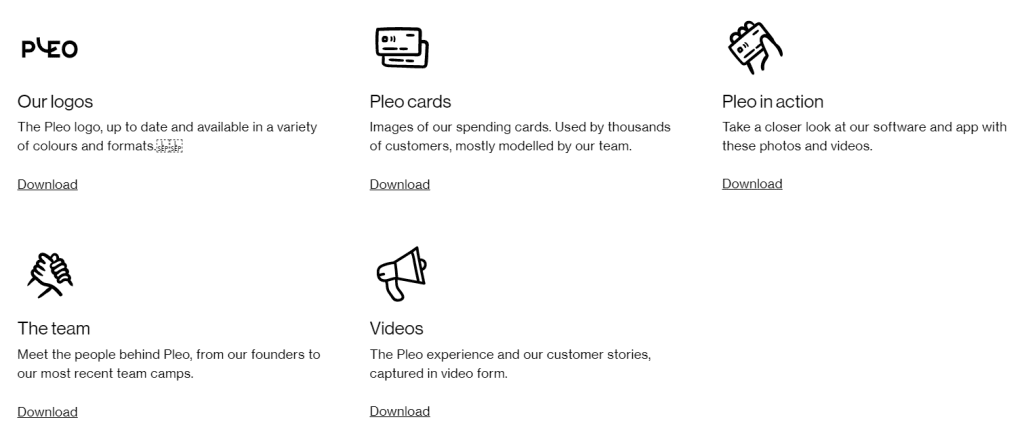 Example: Pleo is using specific icons – it’s a part of their brand. The icons in their media kit are consistent with the brand and make it more friendly. https://www.pleo.io/en/press
Example: Pleo is using specific icons – it’s a part of their brand. The icons in their media kit are consistent with the brand and make it more friendly. https://www.pleo.io/en/press
Step #5 Launch Your Campaign
 Whether your media kit is made as a packet of documents and images, a single PDF file, or a web page, the only way to scale your results is to test it. Measure the responses you get with and without the media kit, and see if there are opportunities to optimize the content you have shared. P.S. Your media kit can be integrated as a part of your website. This way you are in charge of the buzz created around your brand and have a unique PR strategy. Are you ready to improve your everyday B2B outreach? Invest in a good-quality startup media kit and let your marketing team focus on scoping new partner brands.
Whether your media kit is made as a packet of documents and images, a single PDF file, or a web page, the only way to scale your results is to test it. Measure the responses you get with and without the media kit, and see if there are opportunities to optimize the content you have shared. P.S. Your media kit can be integrated as a part of your website. This way you are in charge of the buzz created around your brand and have a unique PR strategy. Are you ready to improve your everyday B2B outreach? Invest in a good-quality startup media kit and let your marketing team focus on scoping new partner brands.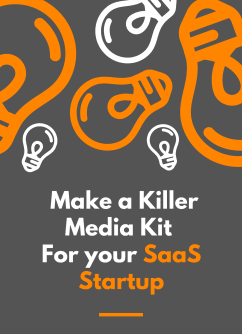
Tags:
SaaS GrowthMarch 17, 2021



Comments